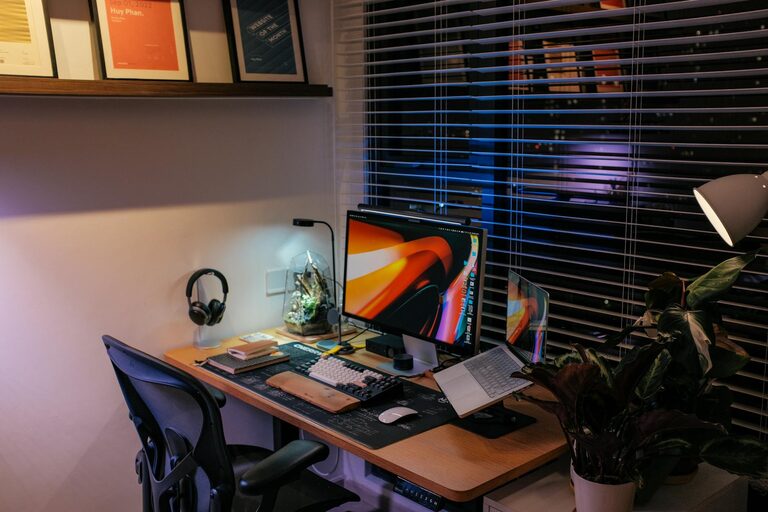Creating a desk setup that promotes both focus and comfort is essential for a productive workday. Whether you work from home or in an office, your workspace can significantly impact your concentration, energy levels, and overall well-being. This guide offers practical tips to help you design a functional and comfortable desk setup that encourages productivity.
Why a Good Desk Setup Matters
A well-organized and ergonomic workspace reduces distractions and physical strain. This allows you to concentrate better, work longer without discomfort, and maintain a positive mindset. Attention to details such as lighting, chair support, and desk accessories can transform your work experience.
Choosing the Right Desk and Chair
Desk Height and Size
Your desk should be at a comfortable height—generally around elbow height when you sit. This reduces strain on your shoulders and wrists. Opt for a desk that offers enough surface area for your computer, notes, and essential tools without feeling cluttered.
Ergonomic Chair
Investing in a quality ergonomic chair can make a huge difference. Look for adjustable features such as seat height, backrest angle, and lumbar support. Your feet should rest flat on the floor, and your knees should be at a 90-degree angle for optimal posture.
Positioning Your Monitor and Accessories
Monitor Placement
Place your monitor about an arm’s length away, with the top of the screen at or slightly below eye level. This helps reduce neck and eye strain. If you use a laptop, consider a separate monitor or a laptop stand to achieve the ideal screen height.
Keyboard and Mouse
Keep your keyboard and mouse close so your arms can stay relaxed at your sides. Using an external keyboard and mouse can improve ergonomics, especially with laptops.
Lighting for Focus and Comfort
Proper lighting prevents eye strain and keeps you alert. Natural light is ideal, so position your desk near a window if possible. If not, use a desk lamp with adjustable brightness and color temperature. Soft, warm light reduces harsh shadows and glare.
Organizing Your Workspace
Declutter Regularly
A clean desk promotes clear thinking. Keep only the items you need daily on your desk. Use drawers, shelves, or organizers to store other materials out of sight.
Use Storage Solutions
Desk organizers, trays, and filing systems help keep papers and tools tidy. Label containers to find items quickly and maintain order.
Adding Personal Comfort Elements
Supportive Accessories
Consider adding a footrest if your feet don’t comfortably reach the ground. A wrist rest for your keyboard or mouse can also reduce strain.
Comfort Enhancements
Plants, motivational quotes, or a small piece of art can make your workspace more inviting and boost mood. However, avoid too many distractions.
Maintaining Good Habits at Your Desk
Take Regular Breaks
Standing up, stretching, or short walks every hour improve circulation and prevent fatigue.
Ergonomic Reminders
Check your posture regularly and adjust your setup if you feel discomfort. Small tweaks over time can make a big difference.
Final Thoughts
Creating a desk setup for focus and comfort is about balancing ergonomics, organization, and personal touches. Start with the basics like chair support and monitor position, then personalize your space to suit your work style. With these tips, you can enjoy a workspace that not only enhances productivity but also supports your physical and mental well-being.

